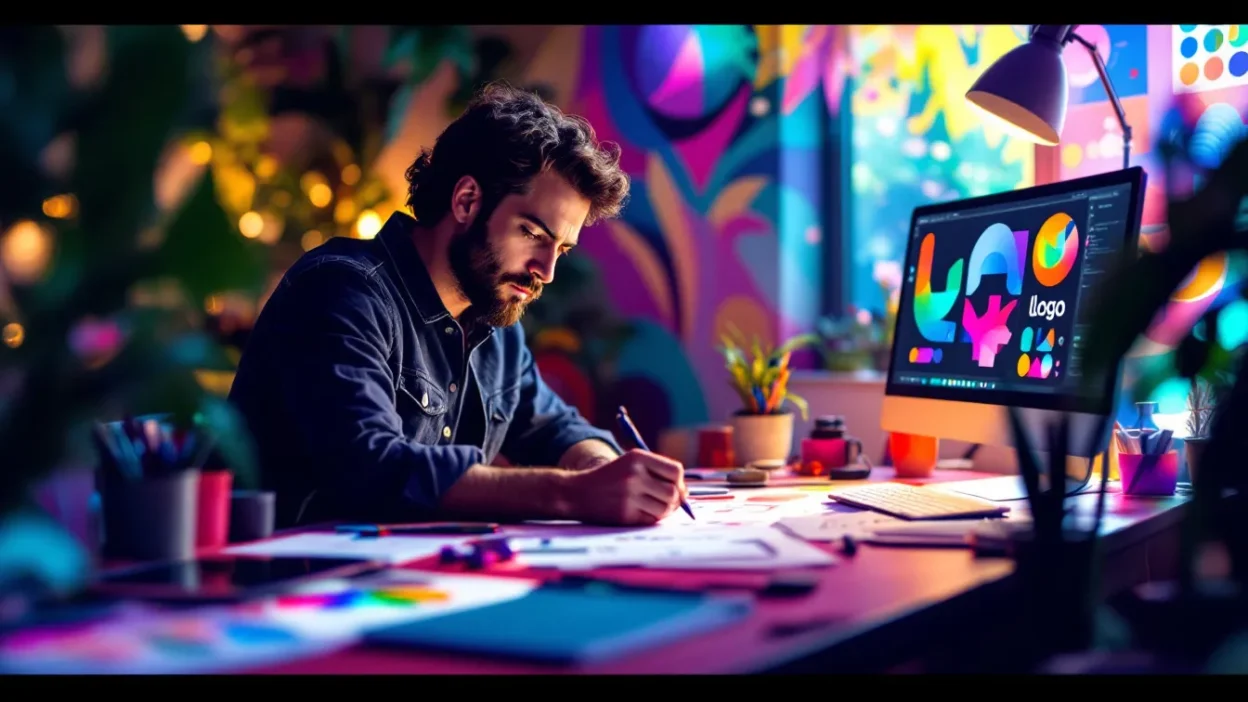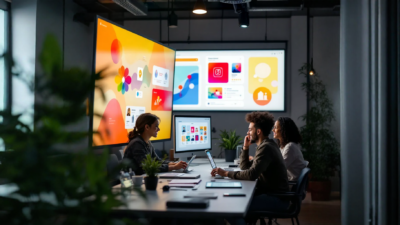When you think about your favourite brands- whether it’s Apple, Nike, or Glossier, what comes to mind first?
Chances are, it’s not just their logo. It’s their entire visual experience- the colours, typography, packaging, design tone, social media aesthetic, and even how they present files in a pitch deck. That cohesive look and feel? That’s what we call visual brand language.
And if you’re building a brand in today’s hyper-creative, visually saturated world, crafting a strong visual language isn’t optional- it’s essential.
What Is Visual Brand Language, Really?
Visual brand language is the set of design elements that visually communicate your brand’s personality, values, and promise. It’s the system that ties everything together, from your website to your Instagram posts to your onboarding slides.
It includes:
- Color palettes
- Typography
- Imagery style
- Layouts and grids
- Iconography
- Animation style
- Product packaging visuals
- Even the way you format your emails
As Lucidpress reports, consistent brand presentation across all platforms increases revenue by up to 23%. Visual brand language plays a huge role in that consistency.
So yes, your logo is a part of your visual identity- but it’s far from the whole story.
Why Is Visual Brand Language So Important?
Let’s break it down:
It builds recognition: You know that moment when you’re scrolling and instantly know it’s a Nike ad before seeing the logo? That’s visual brand language doing its job. It’s those signature colors, fonts, layouts, and photo styles that make your brand instantly recognizable. Think of Spotify’s neon green, Mailchimp’s hand-drawn illustrations. That stuff sticks. You want your brand to have that same “oh hey, I know this!” factor – logo or no logo. Here are a few examples of building a brand voice
It reinforces trust: People trust what they can count on. If your brand looks buttoned-up on your website but chaotic on Instagram, it sends mixed signals. And let’s be honest, no one wants to do business with a brand that seems confused about its own identity. A consistent visual language says, “Hey, we’ve got our act together.” That professionalism builds trust, and trust builds loyalty.
It aligns your team: Ever spent way too much time tweaking someone else’s design just to “make it look on-brand”? Yeah, we’ve all been there. When your brand language is clear, everyone from your in-house designers to the freelancer you hired last week can create content that feels right. It’s like giving everyone the same creative compass. Less micromanaging. More creative flow.
It elevates your content: Here’s the truth: even the most brilliant content can get lost in the noise if it doesn’t look good. A strong visual identity helps your message land the way it’s meant to. It makes your emails scroll-stopping, your social posts share-worthy, and your decks something people actually remember. When your content looks cohesive and considered, it feels more impactful.
Check out this article on how teams can manage creative assets with ButtonShift.
The Creative Struggle: Building Consistency at Scale
For many start-ups and creative teams, building a visual language sounds exciting at first but maintaining it? That’s where things get tricky.
How ButtonShift Supports Visual Brand Language
At ButtonShift, we believe great branding shouldn’t break under pressure. That’s why we built a platform where creative teams can centralize their content, review visuals collaboratively, and preserve brand identity throughout every project.
Here’s how we help:
Creative Boards That Reflect Your Brand
Organize your creatives in customizable Boards that follow your brand hierarchy. Whether you’re managing a campaign or a photoshoot, your team knows where everything lives and what it should look like.
Spaces for Every Brand or Client
If you work with multiple clients (or sub-brands), Spaces help you keep brand elements separate but consistent within each domain.
Collections for Departments or Campaign Types
Group deliverables by channel or function say, Instagram posts, ad banners, or print materials so each creative follows its specific visual rules.
Feedback Without Losing the Visual Plot
Get contextual feedback directly on images and videos. No more comments like “Can you use the other green?” you can literally point to what’s off. Check out this article to know more on which type of feedback works the best for creative teams
Creative Industry Needs Better Tools for Brand Consistency
In today’s content-first world, visual branding is the first impression, the elevator pitch, and sometimes even the sales funnel. That’s why creating and protecting your visual language is more than just a branding exercise. It’s a creative commitment.
Brands that master this visual fluency not only stand out but stick in people’s minds. As Canva puts it, strong brand identity helps audiences emotionally connect with you and return again and again.

Ready to Build a Visual Brand Language That Lasts?
Whether you’re a creative agency, a growing brand, or a freelancer juggling multiple projects, ButtonShift helps you keep your visual brand identity consistent and collaborative. We make it ridiculously easy to align your team, streamline feedback, and build a visual language that actually sticks, not just for today’s campaign, but for every future touchpoint.
So whether you’re building a brand from scratch or trying to tame the wild inconsistencies of your current one, ButtonShift gives you the tools (and sanity) to do it right.
Your brand deserves to look as good as it feels everywhere. Let’s make that happen



